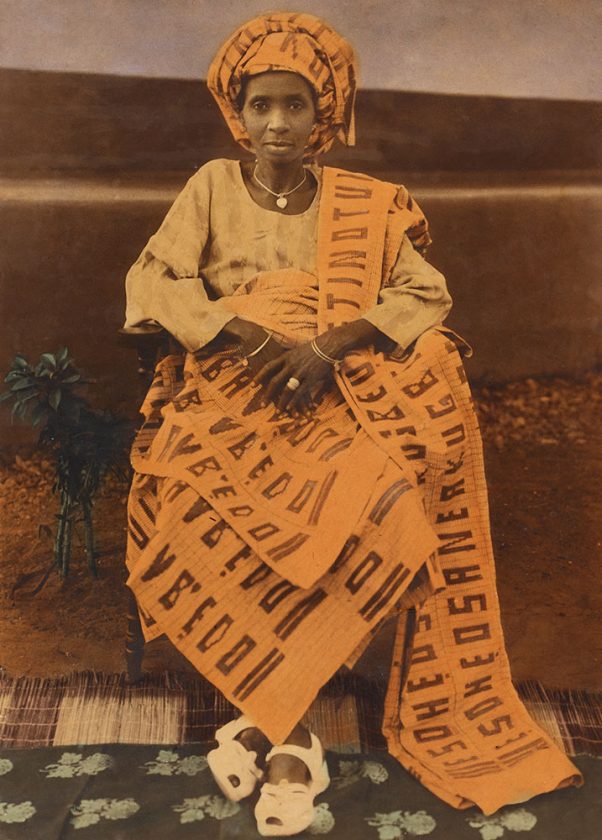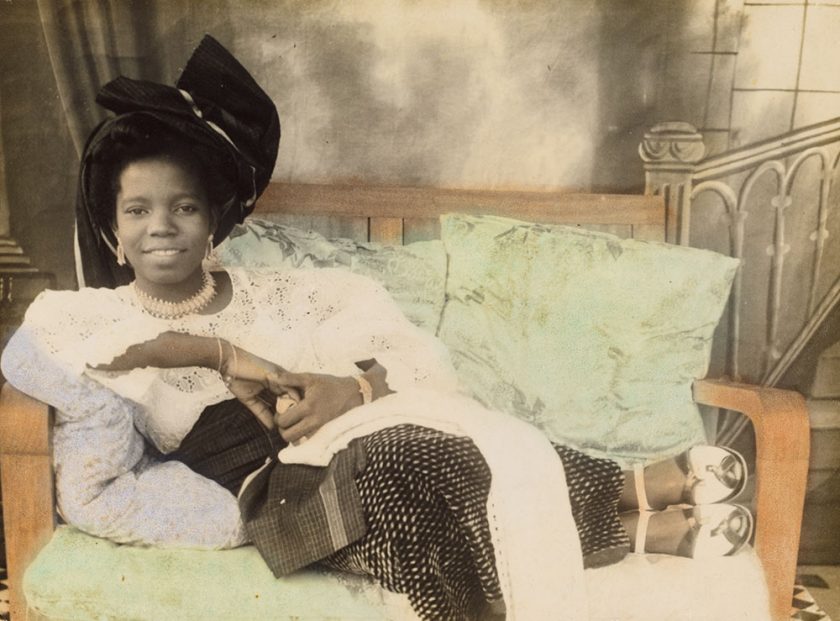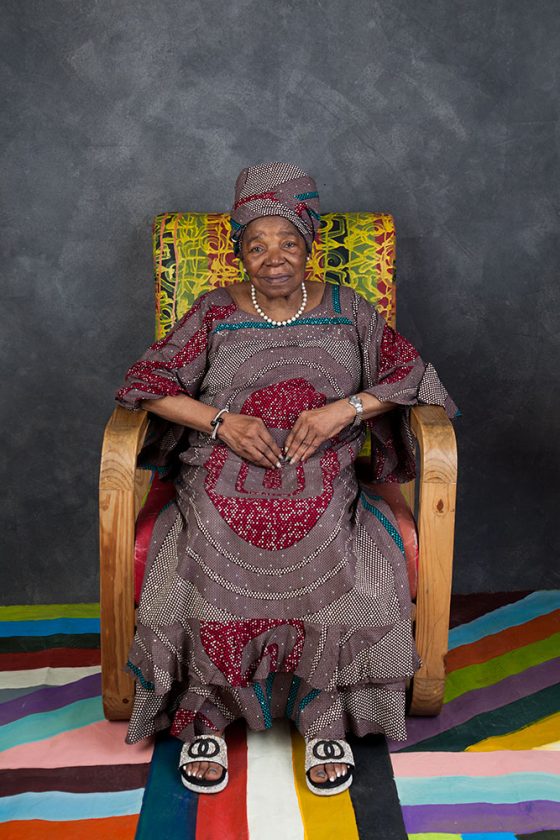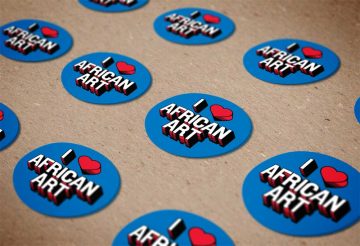
Prior to the introduction of color film in West Africa, photographers had to be not only technically proficient, but artistic—experimenting with hand-coloring and tinting—to satisfy their clients’ demands. Edo women, in particular, wanted their vibrant dresses, jewelry, and head wraps depicted in color. Using a Marshall Photo-Oil Colors paint set imported from New York, Alonge taught himself how to hand-color prints. His skills with hand-coloring and imaginative use of color are evident in the beautifully toned image of young Stella Gbinigie and the portraits of Madam Ogiugo and Chief Edo Osagie.
Alonge photographed Madam Stella Gbinigie and her sisters in 1950. At 16, Stella’s beauty, grace, and youth embodied the promise and optimism of Nigeria’s future and upcoming independence from Britain in 1960. Educated in London, Stella returned to Nigeria and worked as a secretary for 32 years, ultimately retiring as head of the secretarial department, in the Federal Ministry Cabinet office, Lagos. Known as the “live wire of the End room,” Stella received the National Award of the Member of the Order of the Niger (M.O.N.) in 1979, one of the few women to receive such an honor, in recognition of her loyalty and service.
Stella also posed for a portrait with her sisters Imarayi Gbinigie, Helen Uzzi, and Helen Uwaifo. A harbinger of the “Auntie style,” Nigeria’s current fashion trend, the sisters dressed up in their mother’s outfits—her lace blouses, skirt wrappers, and headties—and distinctive jewelry. The only item of clothing they owned was their shoes. Their ease of expression and individual charm create a memorable image that illustrates Alonge’s gentle and respectful manner with his patrons. Over 60 years later, Madam Stella reminisced, “He treated us like his own children, not a client.”
Alonge’s lens also captured Madam Esther Egharevba Ogiugo in 1950. A successful merchant and trader whose wares included building materials and cured tobacco leaves from Britain, Ogiugo belonged to Akugberetin (Unity Is Strength), an enterprising women’s association. The Edo inscription “Esehosa nerakugbe‘vb’Edo” on her hand-woven textile translates as “God’s glory encompasses unity in Edoland.”
Chief Francis Edo Osagie was an up-and-coming entrepreneur in the Nigerian timber trade and a member of the board of directors of Shell-BP Petroleum Development Company of Nigeria. A connoisseur of traditional arts and cultures, Edo Osagie built a house, known as Erinmwinorose House, in Benin City that stands as a private museum today.
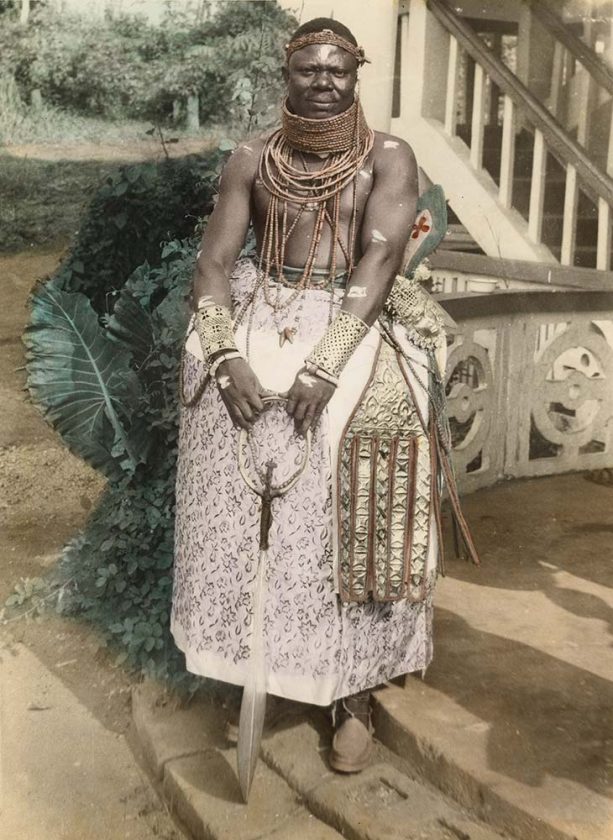
c. 1960
EEPA 2009-007-1775
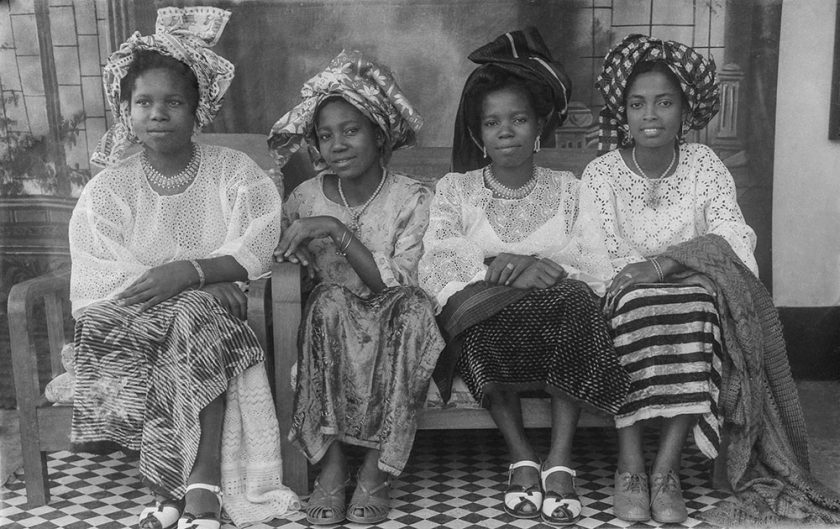
Left to right: Imarayi Gbinigie, Helen Uzzi, Stella, and Helen Diagonya Uwaifo
1950
EEPA 2014-004-0249
